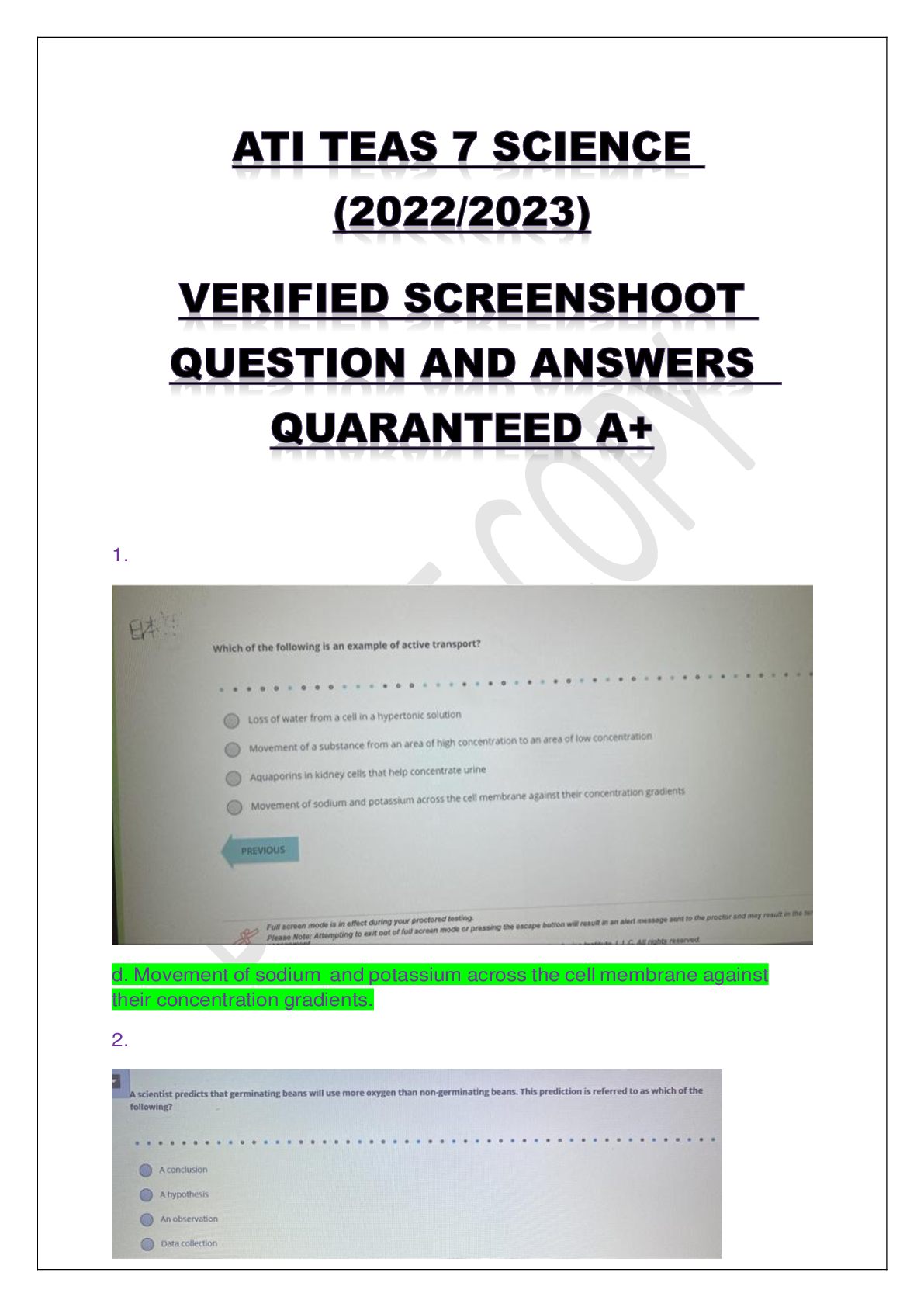ATI Pharmacology – PN, exam review
Document Content and Description Below
ATI Pharmacology – PN, exam review. - What are specific considerations for adult clients, clients who are taking anticoagulants, and clients who have fragile veins? - avoiding tourniquets, using ... BP cuff to visualize. - no slapping - hold their hand below the heart. - avoid using the back of the hand - avoid rigorous friction while cleaning site. Infiltration - An IV that is pale, has local swelling, decreased skin temperature around the site, damp dressing and slowed infusion is what complication? Extravasation (infiltration of vesicant) - An IV is painful, burning, red and swelling what complication is occurring? - Stop the infusion and remove catheter - elevate extremity - encourage ROM - apply a cold or warm compress depending on the solution infiltrated. - check with the provider to determine whether they still need IV therapy. - What is the treatment for infiltrated IV? Fluid overload - A pt receiving IV solutions begins appearing with distended neck veins, hypertension, tachycardia, SOB, crackles in lungs, and edema what complication is occurring? - Stop the infusion and notify the provider - follow facility protocol. (withdrawing the vesicant solution from the IV access and infusing an antidote through catheter before removal. - repeated treatment for infiltration. - what is the treatment for extravasation?- What is the treatment for fluid overload? - Slow IV rate or stop. - raise HOB - monitor VS & O2 - Adjust the rate after correcting fluid. - anticipate administering diuretics Phlebitis/thrombophlebitis - A pt with an IV appears edematous, erythema, throbbing, burning, or pain at the site, increased skin temperature, red line, and slowed infusion are s/s of what IV complication? - promptly d/c the infusion and remove the catheter. - elevate extremity - apply a cold compress to minimize flow of blood, then warm to increase circulation. - restart if needed. - obtain a specimen for culture at site. - what treatments are there for phlebitis/thrombophlebitis? - Rotate sites at least every 72 hours according to facility policy. - Monitory IV sites using phlebitis scale - avoid lower extremities - use hand hygiene - use surgical aseptic technique. - What are some ways to prevent thrombophlebitis? Central nervous system stimulation - what type of medication would put a patient at risk for seizures and precautions should be taken. Central nervous system depression - what type of medication would require a patient to do not drive, operate heavy machinery, or participate in other activities can be dangerous. [Show More]
Last updated: 2 years ago
Preview 1 out of 23 pages
.png)
Buy this document to get the full access instantly
Instant Download Access after purchase
Buy NowInstant download
We Accept:

Reviews( 0 )
$9.00
Can't find what you want? Try our AI powered Search
Document information
Connected school, study & course
About the document
Uploaded On
Jul 22, 2022
Number of pages
23
Written in
Additional information
This document has been written for:
Uploaded
Jul 22, 2022
Downloads
0
Views
106

.png)
.png)
.png)
.png)
.png)
.png)

.png)
.png)
.png)
.png)
.png)

.png)

